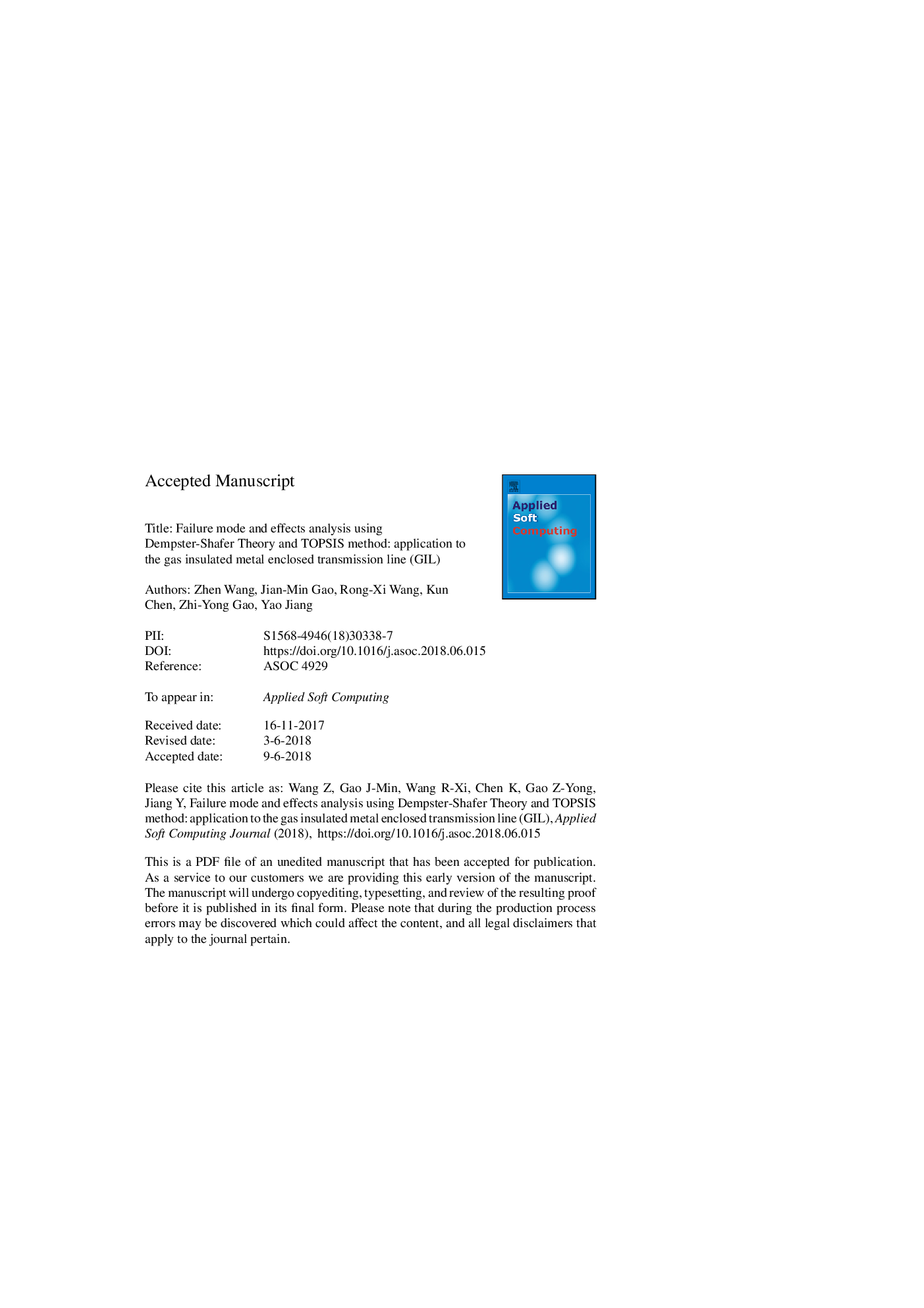| Article ID | Journal | Published Year | Pages | File Type |
|---|---|---|---|---|
| 6903417 | Applied Soft Computing | 2018 | 37 Pages |
Abstract
Failure mode and effects analysis (FMEA) as a useful tool in safety and reliability analysis to identify and eliminate known or potential failures from the process of product design, development and production has been widely used in a variety of industries. However, in traditional FMEA, there are two big flaws that of the acquisition and aggregation of experts' diversity evaluations and the calculation of the risk priority number of failure modes. In our paper, an improved FMEA approach based on Dempster-Shafer Theory (DST) and Technique for Ordering Preference by Similarity to Ideal Solution (TOPSIS) method is proposed to dispose the flaws for improving the effectiveness of traditional FMEA. In the proposed FMEA approach, a new aggregation method on the basis of DST is introduced for aggregating various kind of evaluations, then the TOPSIS method is utilized to rank the failure modes according to the evaluations in relation to their severity, occurrence and detectability. Based on DST and TOPSIS method, the proposed FMEA approach can well capture and aggregate diversity evaluations of experts and rank the failure modes under a compromise way with the condition of various uncertainties. Finally, the proposed FMEA approach is applied to the hazard analysis of the failure modes identified in a gas insulated metal enclosed transmission line (GIL) and gets a good result which consistent with practical engineering background. By the analysis and comparison with other methods, we find that the proposed approach is more applicable in real application.
Related Topics
Physical Sciences and Engineering
Computer Science
Computer Science Applications
Authors
Zhen Wang, Jian-Min Gao, Rong-Xi Wang, Kun Chen, Zhi-Yong Gao, Yao Jiang,
